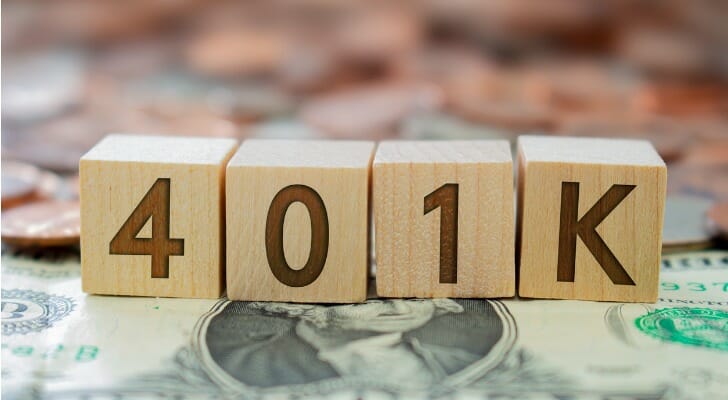As you’ve continued contributing to your retirement account and the market has fluctuated, your portfolio may no longer be as diversified as it once was. That’s where rebalancing comes in. Below, we’ll cover the basics of rebalancing. A financial advisor can also help assess your retirement plan’s performance and guide you in selecting investments that align with your financial goals.
What Is Rebalancing?
Technically speaking, rebalancing your 401(k) is the process of realigning the weights of assets in your portfolio. This is done by periodically buying and selling assets, or investments, in order to maintain the original percentages of your asset-allocation profile.
Experts recommend rebalancing at least annually, with a maximum of four times a year. Since investing can sometimes prove emotional – especially during volatile periods – it’s best to rebalance on a set schedule in order to keep your decisions as unaffected by emotion as possible.
Why Should You Rebalance Your 401(k)?

Most of the time, when you enroll in a 401(k) or similar defined contribution plan, you decide on a target asset allocation depending on your risk tolerance profile. This may change as you earn more money and approach retirement, so it’s important to review your portfolio at least once a year.
Let’s assume that when you were in your early 30s, you set your 401(k) up with an 80% stocks, 20% bonds allocation. One year later, suppose you’ve saved $10,000 – $8,000 went towards stocks and $2,000 went towards bonds.
By the end of the second year, suppose you have $23,933 – $19,733 in stocks and $4,200 in bonds. At this point, your asset allocation percentage has shifted to 82.5% stocks and 17.5% bonds.
If the years pass, and you don’t rebalance your 401(k) every year, your asset allocation could further slide. Say it reaches 92% stocks and 8% bonds, at which point, the market suddenly falls, like it did during the COVID-19 pandemic.
In such a situation, with such a high weighting towards stocks, you would potentially suffer losses to which you didn’t even know you’d been exposed. To rebalance, you’d need to sell some stocks and buy bonds to return to the desired 80/20 asset allocation target.
Note that rebalancing your portfolio is not the same as reallocation. Reallocation is the term for changing the percentage of invested assets depending on how much risk you want to take. Rebalancing is selling and buying assets to remain in the same percentage ranges. If your allocation percentages are off target by 5% or more, it’s a good idea to consider rebalancing. Allocation targets should also be evaluated annually to make sure that your investments continue to align with your risk tolerance.
The Cost of Rebalancing Your 401(k)
In general, rebalancing your 401(k) doesn’t cost you anything. You are selling your own assets and buying new ones, and most investment options included in your 401(k) do not incur a transaction fee.
Trades that do incur fees are usually listed in an obvious manner. If you choose to buy such assets, make sure you account for the added costs of buying and selling them. Just keep in mind that some plan managers may not allow you to trade assets too frequently.
Since a 401(k) is a tax-advantaged retirement account, you won’t need to worry about paying taxes on the amounts you earn when you rebalance your portfolio. You’ll only pay income taxes on your 401(k) money when it comes time to withdraw during retirement.
If you have a target-date retirement fund, you may not even need to manually rebalance. Many plan administrators have rolled out accounts that automatically rebalance in order to stay within your desired asset allocation range. Target-date funds not only rebalance, they also reallocate as you age.
Bottom Line

Financial experts suggest rebalancing your 401(k) at least once a year to keep your asset allocation in line with your risk tolerance and financial goals. Regular rebalancing helps maintain your desired investment mix, ensuring your portfolio stays on track. In most cases, rebalancing your 401(k) comes at little to no cost, especially if you invest in no-fee funds. If you have a target-date retirement fund, rebalancing may happen automatically, eliminating the need for manual adjustments.
Retirement Planning Tips
- Not sure if your target asset allocation will set you up for a smooth retirement? For a solid, long-term financial plan, consider speaking with a qualified financial advisor. SmartAsset’s free tool matches you with financial advisors who serve your area. You can interview your advisor matches at no cost to decide which one is right for you. If you’re ready to find an advisor who can help you achieve your financial goals, get started now.
- Use SmartAsset’s free retirement calculator to get a good first estimate of how much money you’ll need to retire.
Photo credit: ©iStock.com/Marvin Samuel Tolentino Pineda, ©iStock.com/peterschreiber.media, ©iStock.com/kupicoo
